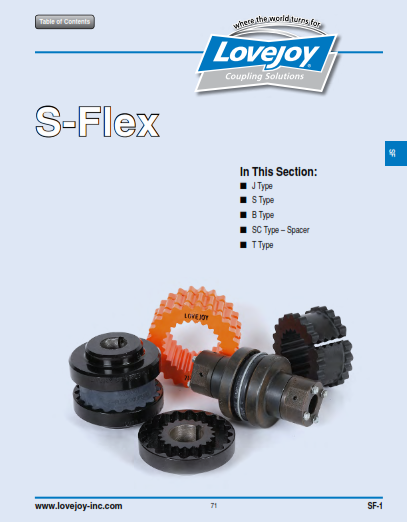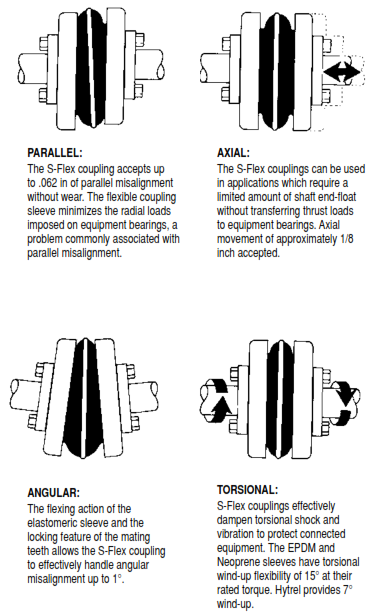Moving to the elastomer, similar to jaw couplings, an S-Flex sleeve can be degraded if exposed to environmental conditions it was not designed for (i.e. - excessive heat, cold, or chemical exposure).
 |
| Standard S-Flex Sleeve |
A second failure mode in an S-Flex elastomer is a straight tear that runs parallel to the coupling flanges. Such a tear demonstrates either elastomer fatigue that can be attributed to misalignment, the flanges being too close to the elastomer (with them pressing in on it).
The third and least understood of the elastomer failures are when the teeth of the elastomer wear away (often on one side). At the highest level, it must be understood that S-Flex couplings are designed to accommodate misalignment through the flexing of the elastomer itself and that the tooth profiles of the elastomer are to be snug and engaging with the coupling's metallic flanges (not chattering).
If the coupling is oversized for the application (or if there is a poor fit between the elastomer and flanges), and there is not enough wind-up to have the elastomer's teeth fully engaged with the steel flange teeth, torque transmission will be localized to the tips of the elastomeric sleeve, leading to premature tooth wear, chatter, and ultimately sleeve failure. If not detected early enough sleeve teeth can wear away completely, often only on one side, with the sleeve spinning freely inside the given flange.
This last scenario (the coupling being oversized for the application) is particularly vexing to most end user and even power transmission veterans because, across many elastomeric coupling types, a common way to address an elastomer failure is to either upsize the coupling or go with a strong elastomer material. Given the wind-up chatter issue... going to a stiffer material or even more oversized coupling will only exacerbate the problem.
 |
| Lovejoy's Jaw In-Shear Coupling |
For more information on sleeve coupling failures, consider checking out the MPTA bulletin on it (Sleeved Element Failure Analysis - MPTA C8c-2011), which Lovejoy contributed significantly to... or reach out to a Lovejoy application specialist directly.
To keep learning about S-Flex couplings on this blog, go to:
Article Shout Out: I would like to specifically thank Michel "Mitch" Bouchard of General Bearing Services in Canada for requesting that we cover this question on the blog. If you would like to submit or request a question be addressed on this blog, please fire us off the question here.












